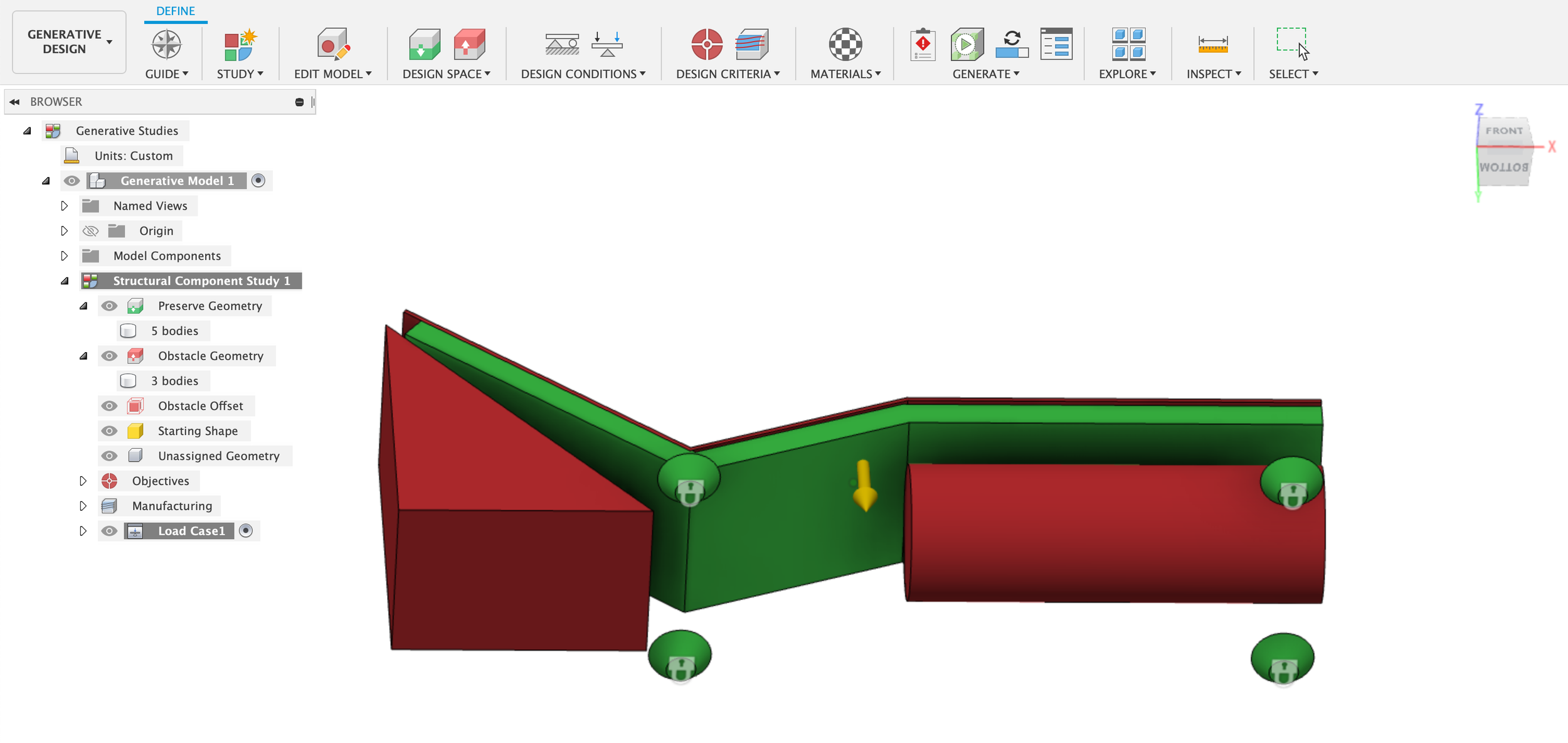Generative Design
In Week 9, we learned to work with the generative design function and process. This feature in Fusion360 uses artificial intelligent algorithms to generate and evaluate potential design ideas. The assignment was to create generative designed object – which could be anything, but made with some realities in mind.
Inspiration
While looking through examples of generative design, I came across this image of a lounge chair and decided to see how much of it I could replicate myself in Fusion360.
Image credit: Emmanuel Touraine.
Generative Design Process
I started by creating simple extrusions to create the main body of the lounge chair and bases for the legs. These bodies would be defined as “preserved geometries.” I also then made a second body directly on top to function as one of the “obstacle geometries.”
Next, I switched over to the Generative Design feature to define these bodies as preserved or obstacle geometries, applied structural constraints to the leg bases that would touch the floor, and finally applied structural loads and forces.
After setting up all of the constraints and doing a quick pre-check, I hit the “generate” button to see what outcomes I would get. I wound up with a more simple design than expected.
This screen capture of Fusion360 shows my final result. I thought this one was the best of all recommended outcomes – but it was just a fairly simple lounge chair design.
After seeing this result, I decided to try making some tweaks to the obstacle geometries and also to the structural loads and forces itself. I decreased the load (realizing I didn’t scale my overall model correctly) and the body behind the back of the chair to see what would happen next. The image below was the next outcome: Fusion360 generated a strange but more visually interesting design to connect and hold the back of the lounge chair to the rest of the body.
It also made me wonder about what other adjustments could be made to the bodies and constraints. Would I need to create additional preserved geometries with the legs to create the more intricate design in the inspiration image? What would happen if I made the obstacle geometries behind the chair even smaller? Waiting for the generative design results of each iteration takes some patience though (multiple hours!) – but this was a fun introduction to this new tool.






